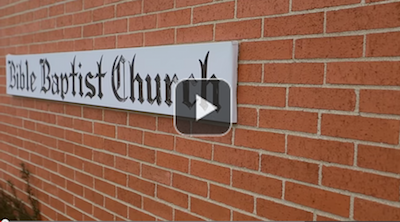JULY 28, 2019
THE RESURRECTION OF CHRIST (PART III)
INTRODUCTION:
1. As Mary Magdalene and others came to the tomb early in the morning on the first day of the week, they found the sepulcher open and empty. They encountered a number of proofs that Jesus was risen yet none of them at first accepted the fact.
2. Gradually the truth seemed to register with them, beginning with John. (Verse 8) We are not told specifically, but perhaps Peter also believed along with John. Mary Magdalene, however, was still unbelieving until the risen Christ revealed Himself to her. (Verses 15, 16)
3. Later that same day (the first day of the week), as the disciples were gathered together, and others with them, all who were there received the infallible proof of the resurrection when the risen Christ Himself came and stood in their midst.(See Luke 24:36-47 to see how He went about convincing them, for many were yet unbelieving.)
4. There was yet one remaining apostle, who, being absent, remained yet in unbelief. Thomas said that nothing short of seeing and personally examining the wounds in His body would convince him that the Lord was risen.
5. Exactly one week later, Thomas would get his chance to do just that. Despite his offensive words, and the contempt expressed in them, the Lord will, on the next Lord’s Day, accommodate doubting Thomas’ demands with another appearance like the one before.
I. WHEN IT WAS THAT CHRIST MADE HIS SECOND APPEARANCE WITH HIS DISCIPLES. (VERSE 26)
A. IT WAS AGAIN ON THE FIRST DAY OF THE WEEK. “After eight days,” that day seven nights after He rose, which must therefore be, as that was, the first day of the week.
1. Where Christ was during these days we are not told. He was not bodily with His disciples as He was before.
2. Where Christ was during the forty days between His resurrection and His ascension we do not know, and it is foolish to speculate.
3. In the beginning of His earthly ministry, immediately after His baptism, He was unseen, being taken into the wilderness to be tempted of Satan. (Matt. 4:1-10)
4. Now, in the beginning of His glory He is forty days, for the most part, unseen. During His forty days temptation, He was without holy companionship. The holy angels had to stay at bay until it was over – only then could they minister to Him. (See Matt.4:11) We can be assured that during this forty day interval He was in holy company, and those beautiful and adoring creatures ministered unto Him.
B. THERE ARE REASONS WHY CHRIST DEFERRED SO LONG AS A WEEK.
1. That He might try the faith of those who were present the week before.
a) After being so blessed by our Lord, having been given understanding of the Scriptures, “Then were the disciples glad.” (Verse 20)
b) But, He would try them to see if they hold their ground. Not seeing Him for several days, will their joy remain?
c) They needed to be gradually weaned from having His bodily presence. Though we see Him not, yet believing, we rejoice with joy unspeakable and full of glory. (I Pet. 1:8)
2. That He might put an honor upon the first day of the week, and give a plain intimation that it was His will that it should be kept by His churches as the Christian Sabbath.
a) On the first day of the week Christ met with His disciples once and now twice. Note: one, they were assembled on that day, and two, Jesus came to be with them on that day two weeks consecutively.
b) There is no other day specifically mentioned in the New Testament on which the churches were assembled for worship.
c) Matthew Henry thought it was highly probable that on His former appearance to them He appointed that they should come together again on the first day of the next week.
d) It cannot be without good reason that the church has handed down this tradition through every age of its existence. It seems certain that Christ Himself established that the first day of the week is the Lord’s Day.
II. CHRIST’S SECOND APPEARANCE WAS MADE TO THE ASSEMBLED DISCIPLES AT JERUSALEM; WHERE ALL ELEVEN OF THE DISCIPLES WERE PRESENT.
A. THAT IT WAS AT JERUSALEM IS HERE INDICATED. “THE DOOR BEING SHUT.”
1. The doors were shut for fear of the Jews. The same would apply to this second meeting as to the first. (Vs. 19)
2. They were in Jerusalem for the seven days of unleavened bread, which ended the day before. The disciples would not depart for Galilee, it being the Christian Sabbath, but would stay until the day after.
B. THOMAS WAS THERE WITH THE OTHERS. “…AND THOMAS WITH THEM.”
1. He had stayed away once, but not a second time. He had deprived himself of a blessing, but he did not yet know how great a blessing until now.
2. Notice, Christ did not appear to Thomas until He found him in the society of the rest of the disciples. It is in the assembly that Christ is found to be in the midst.
3. Christ dealing with Thomas, both the rebuke and also the tender care He had for him.
4. Christ came and stood in the midst, and like before, He saluted them all with His familiar greeting: “Peace be unto you.”
III. CHRIST’S SECOND APPEARANCE OCCASIONED A WONDERFUL EXCHANGE BETWEEN CHRIST AND THOMAS. (VERSES 27-29)
A. NOTICE OUR LORD’S GRACIOUS CONDESCENSION TO THOMAS. (VERSE 27)
1. Jesus accommodated Thomas’ peevish demands. “Reach hither thy finger…reach hither thy hand…and be not faithless, but believing.”
2. Notice the implicit rebuke of Thomas’ unbelief in the plain reference to his own words. Thus, Thomas had yet another proof, in that he knew of no other man but Christ who had intuitive knowledge to know these things. (Psa. 139:1-4)
3. Christ’s example here teaches us that we must bear the infirmities of the weak (Rom. 15:12), in order not to break the bruised reed, but rather to accommodate them, if possible, so as to strengthen their weak faith. We see the Good Shepherd gathers that which is driven away, even if it is their own folly that is to blame. (Ezek. 34:16)
4. Jesus, having dealt to so condescendingly with Thomas, revealed His purpose by saying, “Be not faithless, but believing,” i.e. do not become an unbeliever. This is a solemn warning to us all – “Be not faithless;” for if we are faithless, then we are Christ-less, and our condition is therefore hopeless.
5. Let us love and admire our gracious Lord who would not allow the smoking flax to be quenched, but rather revive it, and set it ablaze. Thomas’ feet had well nigh slipped, but Christ came to him and stabilized his faith. (Psa. 73:2, 17)
B. SEE HERE THOMAS’ RENEWED FAITH AND HIS EXUBERANT CONFESSION. (VERSES 28, 29)
1. He was now ashamed of his former words of doubt, and exclaimed, “My Lord and my God!”
a) He was now fully convinced of the truth of the Resurrection.
b) His confession is full, consenting to Him as Lord and God. Christ is the Author and Head of true religion, the Sovereign, All-Wise and Unchanging God. Christ is also the Mediator. He is the Lord, the one Lord. (I Cor. 8:6; I Tim. 2:5)c) His confession is personal. “MY Lord and MY God.”
2. We are not told whether or not Thomas did actually examine the wounds in Christ’s hands and side, according to his previous vow and in response to Christ’s accommodating invitation, but it seems most unlikely that he did, hearing his joyful and hearty confession, and sensing the shame that he now felt for his former incredulity.
3. This confession was made to Christ, meaning, “Thou art my Lord and my God.” It was also made before all of those who had witnessed his shameful unbelief. He thus was saying, “This is my Lord and my God.”
C. LET US NOTE THE USE WHICH CHRIST MADE OF THIS MATTER. (VERSE 29)
1. Christ owns Thomas as a believer. “Thomas…thou hast believed.” His faith was real.
2. Christ, at the same time upbraided him. “Thomas, because thou hast seen me…” He had been so reluctant, and after much ado had, at last, come to confess. He was not a good example, being one of the twelve.
3. Thomas would be sent out to preach the Gospel, and call upon people to believe based upon his testimony – something that he failed to do, that is, believe based on the testimony of his fellow apostles.
4. Jesus here declared what was true then, and is still true today, “Blessed are they which have not seen, and yet have believed.” (Rom. 10:13-17)
IV. JOHN, AS AN EYEWITNESS, ADDS THESE CONCLUDING REMARKS TO HIS RECORD. (VRS. 30, 31)
A. HE ASSURES US THAT JESUS PERFORMED MANY OTHER SIGNS WHICH ARE NOT RECORDED. (VERSE 30)
1. Some believe John is referring to many other signs and wonders that were performed by our Lord after His resurrection, proving Himself to be the Christ. These would therefore have been done in the presence of His disciples during the forty days between the resurrection and ascension of Christ.
2. It seems far more likely that John means that there were many other wonders and miracles done by our Lord over the course of His earthly life and ministry besides those that are recorded in this Gospel.
B. HE GIVES THE REASON WHY WE HAVE THOSE SIGNS WHICH ARE RECORDED. (VERSE 31)
1. No sign was ever given by our Lord in order to satisfy the curiosity of sign-seekers. Neither were they done to impress, or merely to display His power.
2. Although many of Christ’s miracles brought temporal relief and blessing to multitudes of people, God had a higher motive and purpose for them.
3. Like all recorded Scripture, those signs which the Holy Spirit chose to preserve in the eternal Word of God are there to produce faith in Jesus, that we might have life through believing in Him.



Speak Your Mind